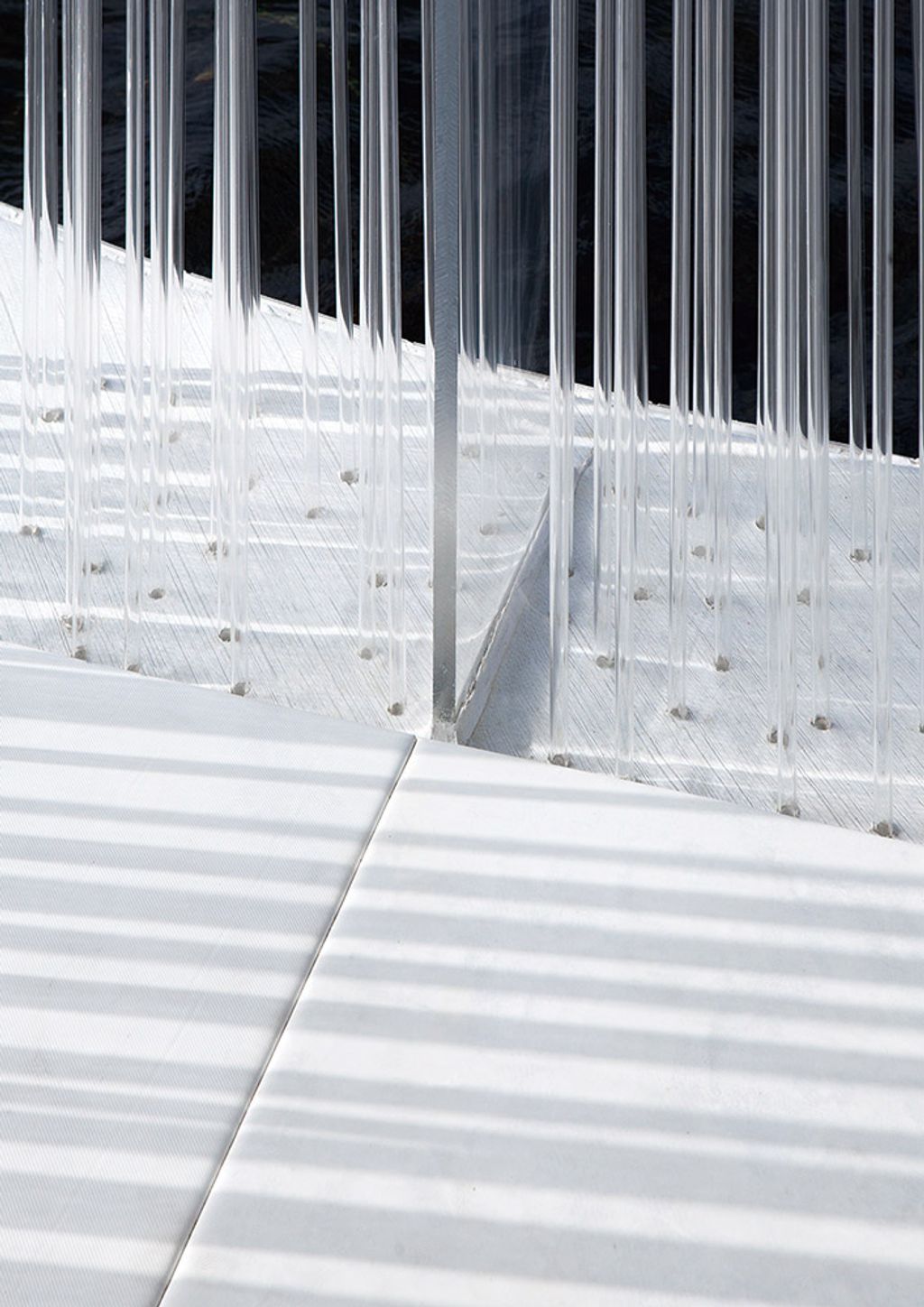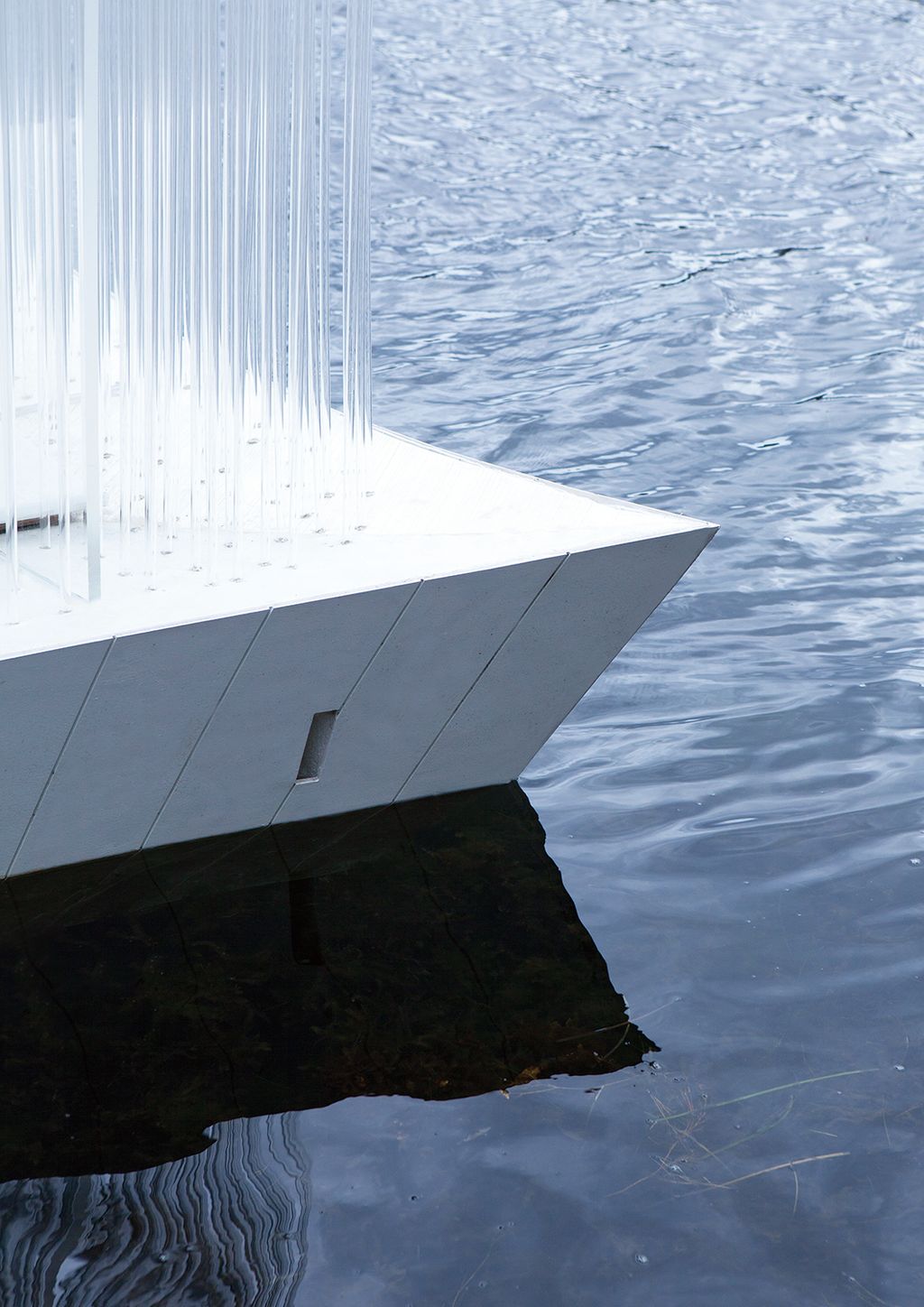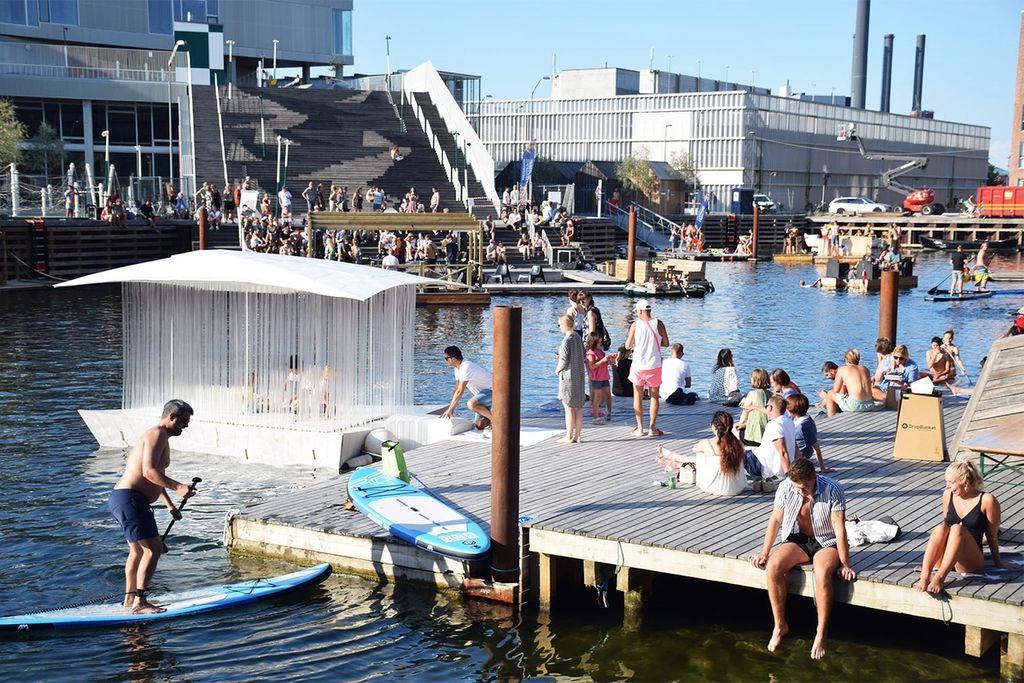Floating Pavilion Ø
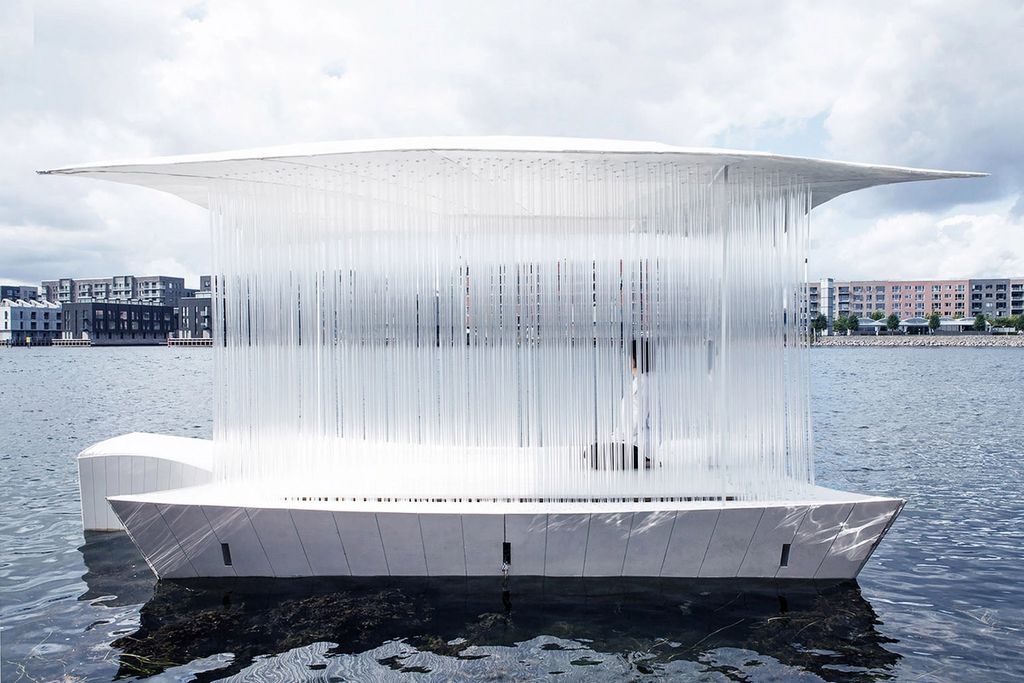
Date: August 2019 Location: Copenhagen, Denmark Area: 10m2 Function: Pavilion Status: Built Collaborator: Helene Christna Pedersen Structural design: Yohei Tomioka, Takayuki Fujimoto Sponsor: Statens Kunstfond, Beta factory
Floating Pavilion Ø is a set of three pavilions that propose urban water areas as new public space. They fall into the categories of cultural, commercial and social. Teahouse Ø, the cultural pavilion, is the first to be built among the series. The waterfront in Copenhagen is an axis for urban activities that is enjoyed and cherished by tourists and citizens alike. Floating Pavilion Ø wishes to enrich this positive, sustainable culture by enhancing the beauty and various natural phenomena created by the substance of water.
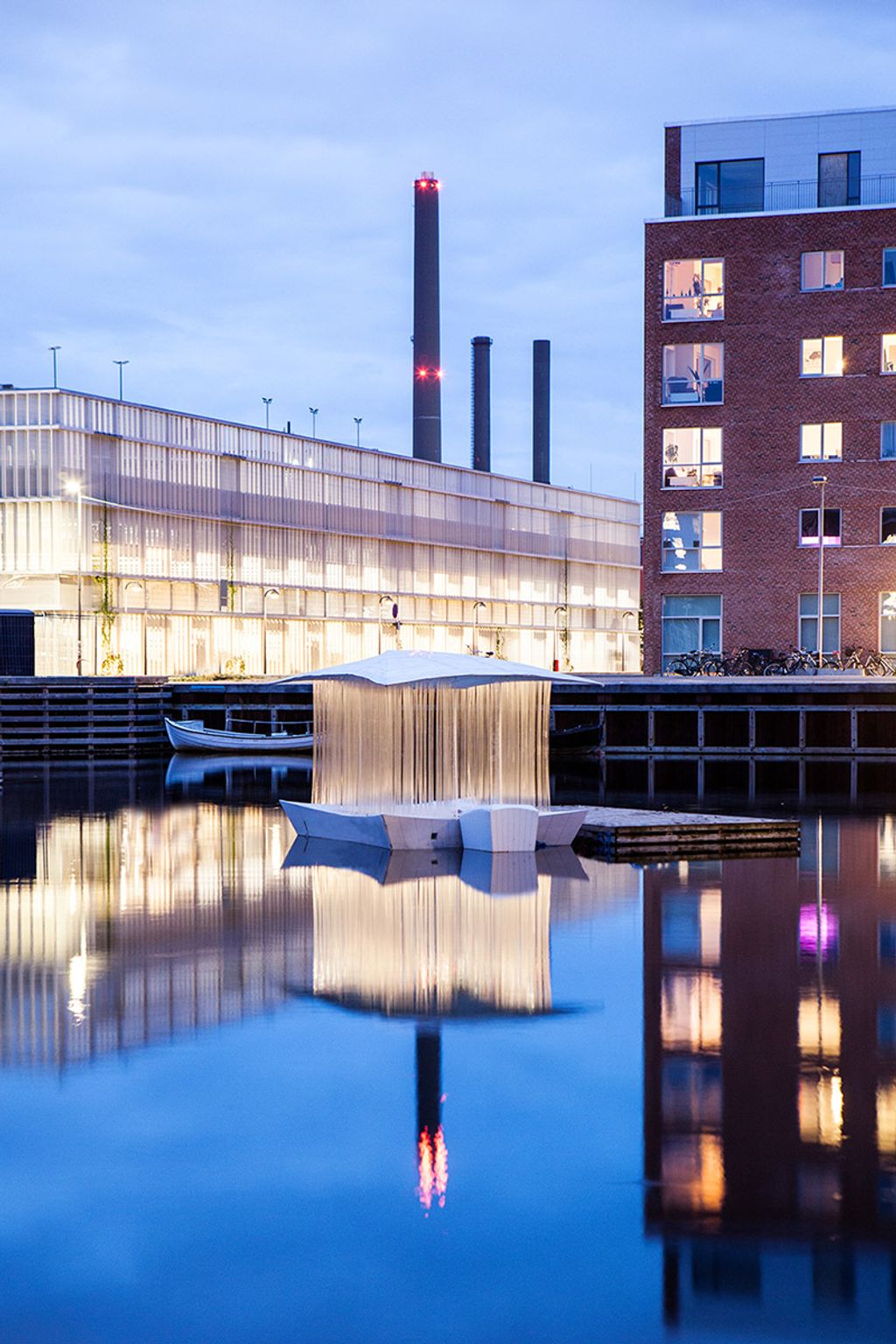
Whilst currently known as a sustainable city, Copenhagen was once condemned with heavily polluted canals when it prospered as an industrial area. Throughout the years there have been huge efforts in combating this issue, and today the waterfront is an axis for urban activities, cherished by citizens and tourists alike. This wonderfully unique quality is something that makes Copenhagen a beacon of social sustainability, where people are willing to maintain their natural environment because they are aware of the joy and beauty it brings their lives. Our studio wanted to elevate this positive characteristic of the city by creating Floating Pavilion Ø; a set of three pavilions that fall under the categories of cultural, commercial and social. The intention is to remind Copenhageners of how using and maintaining their urban water as public space promotes a sustainable future way of living. Teahouse Ø is the first to be built among the series. Teahouse Ø is the cultural pavilion. Its design is intended to reflect the beauty and various natural phenomena created by the substance of water. The space blends the occurrences that are caused by fluctuating reflections, project movements of the weather and the transition of light over time. The interior space and appearance of the architecture as seen from the outside constantly changes, depending on the surrounding environment. The experimental structure of the roof, which is supported by six transparent acrylic walls), makes the pavilion appear to be completely surrounded by water. A translucent boundary of acrylics then directly reflects the expression of the 360-degree water surface, successfully orchestrating a space where the beauty of the water is enhanced. Teahouse Ø was well received by the public and used for activities previously unattainable on water, such as yoga classes, meditation, tea ceremonies and a socially distanced music festival venue, where a DJ played inside the pavilion while the public enjoyed from nearby boats. The other two floating pavilions, Oyster bar Ø (Commercial Pavilion) and Plaza Ø (Social Pavilion) are scheduled to be realised in the next few years, and will continue celebrating the sustainable future of the city.

